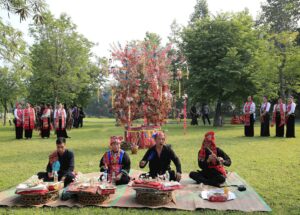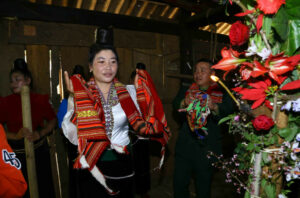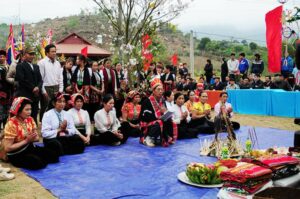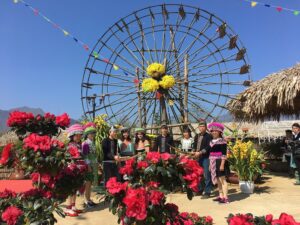Folk Art And Music: The Soul Of Northwest Vietnam’s Ethnic Cultures
To this day, the ethnic groups living in the Northwest still maintain some traditional family crafts such as weaving, basketry, carpentry, blacksmithing, metalworking to make jewelry, and making dó paper. However, each ethnic group has its own specialties. For example, the Thai, Lao, and Muong people are famous for cotton growing and weaving brocade fabric; the H’mong are renowned for blacksmithing tools and growing flax for weaving linen fabric. These handicrafts are usually carried out by women, except for the basketry of household items, which is a well-known craft of the Mon-Khmer groups like the Kho Mu, Xinh Mun, and Khang, and is primarily handled by men.

Folk art and music play a vital role in the cultural identity of Vietnam’s northwestern ethnic groups, serving as a means of storytelling, spiritual expression, and social connection. Each ethnic community has its own distinctive musical instruments, songs, and performances that reflect their way of life and deep-rooted traditions.
Xoe is a unique dance art of the Thai people and a symbol of Northwest culture. There are two types of xoe: xoe vong (circle dance) and xoe dieu (style dance). While the xoe vong is lively and energetic, the xoe dieu is gentle and delicate. The Thai people perform the xoe vong around a fire or a jar of wine with the enthusiastic participation of both the young and the old, men and women, accompanied by the sounds of gongs and drums. On the other hand, the Thai people living along the Da River perform the xoe dieu, which is elegant and refined, with young women dancing to the gentle melody played by two young men.
The Kho-mu and Xinh Mun ethnic groups have their own exclusive dances such as the lac mong (hip-shaking) and luon eo (waist twisting).
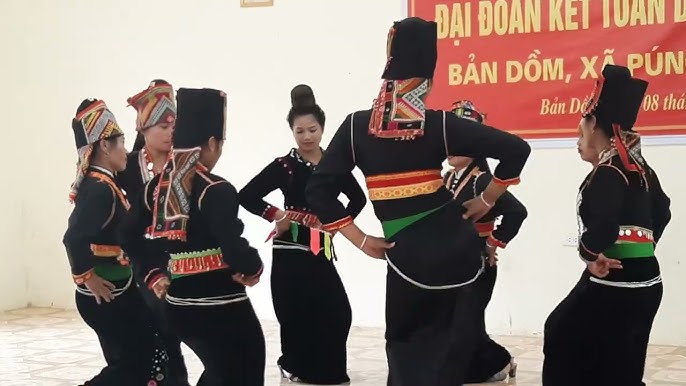
The Sap dance is performed by all ethnic groups in the region, except for the H’mong. This is a distinctive folk dance of the Muong people, usually performed during festive occasions and spring festivals. The dancers are divided into two groups: one group strikes the bamboo poles (called sap), while the other group dances around them. The number of pairs of dancers can range from a few to many, and the more dancers there are, the more vibrant and dynamic the formation becomes. The dancing pairs enter the sạp area in turn, each holding a long, colored scarf, which they toss into the air and swirl around their bodies. The movements are smooth and graceful, with sudden spins, jumps, and fluid motion on the bamboo poles. The formations twist and coil, moving horizontally, vertically, and diagonally, all in sync with the rhythm, ensuring that when the two poles meet, no one’s legs are caught.
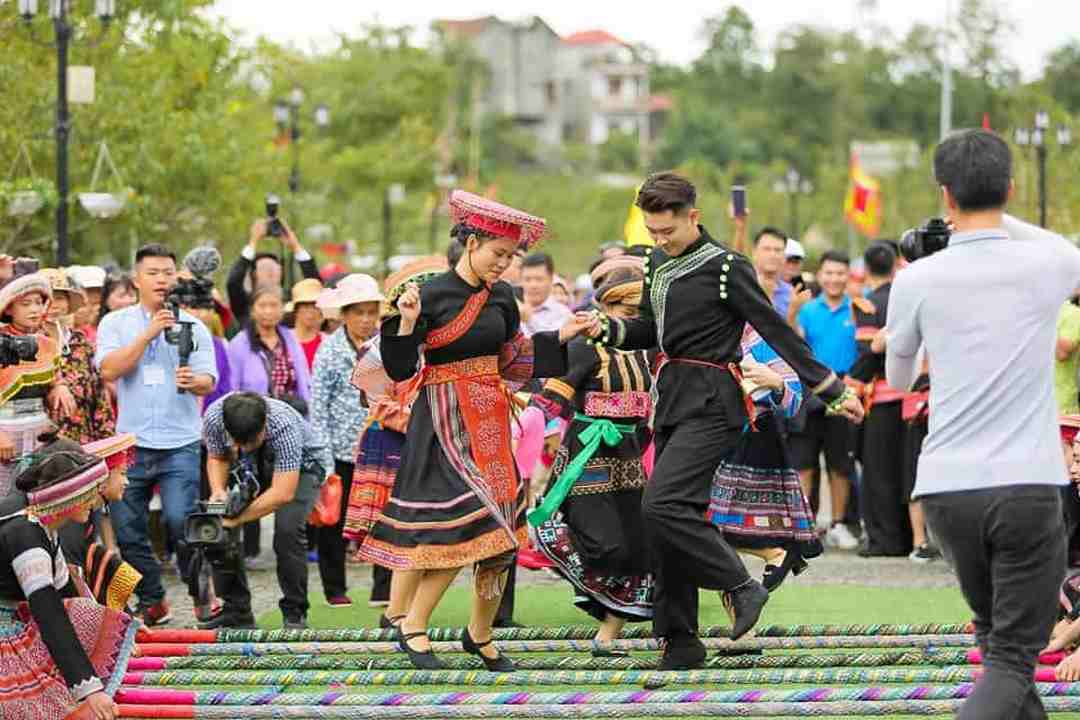
The common musical preference for the ethnic groups in Northwest Vietnam is wind instruments, usually made from bamboo, bronze, or silver. There are dozens of types of instruments in this family, such as Pi pap, khen be Thai, flutes, and khen H’mong. Epic tales are often performed through musical medleys, with many songs, like “Inh la oi”, becoming well-known across the country.
The Khen H’mong is a distinctive and essential musical instrument closely tied to the spiritual life of the H’mong people. The sound of the khen has become a way for the H’mong to express their inner thoughts and desires.

The Bang bu is a wind instrument made from bamboo, commonly used in the mountainous regions of Northwest Vietnam. This instrument is exclusively played by women and is primarily used in fertility rituals, symbolizing prayers for a peaceful life and bountiful harvests.

Additionally, each ethnic group has its own unique instruments, such as the Tinh Tau of the Thai people and the dong oi of the Muong people.

These artistic expressions are not merely entertainment but a bridge connecting generations, preserving the wisdom and history of ethnic communities. Today, efforts are being made to safeguard and promote these cultural treasures, ensuring that the rich folk traditions of northwest Vietnam continue to thrive.
